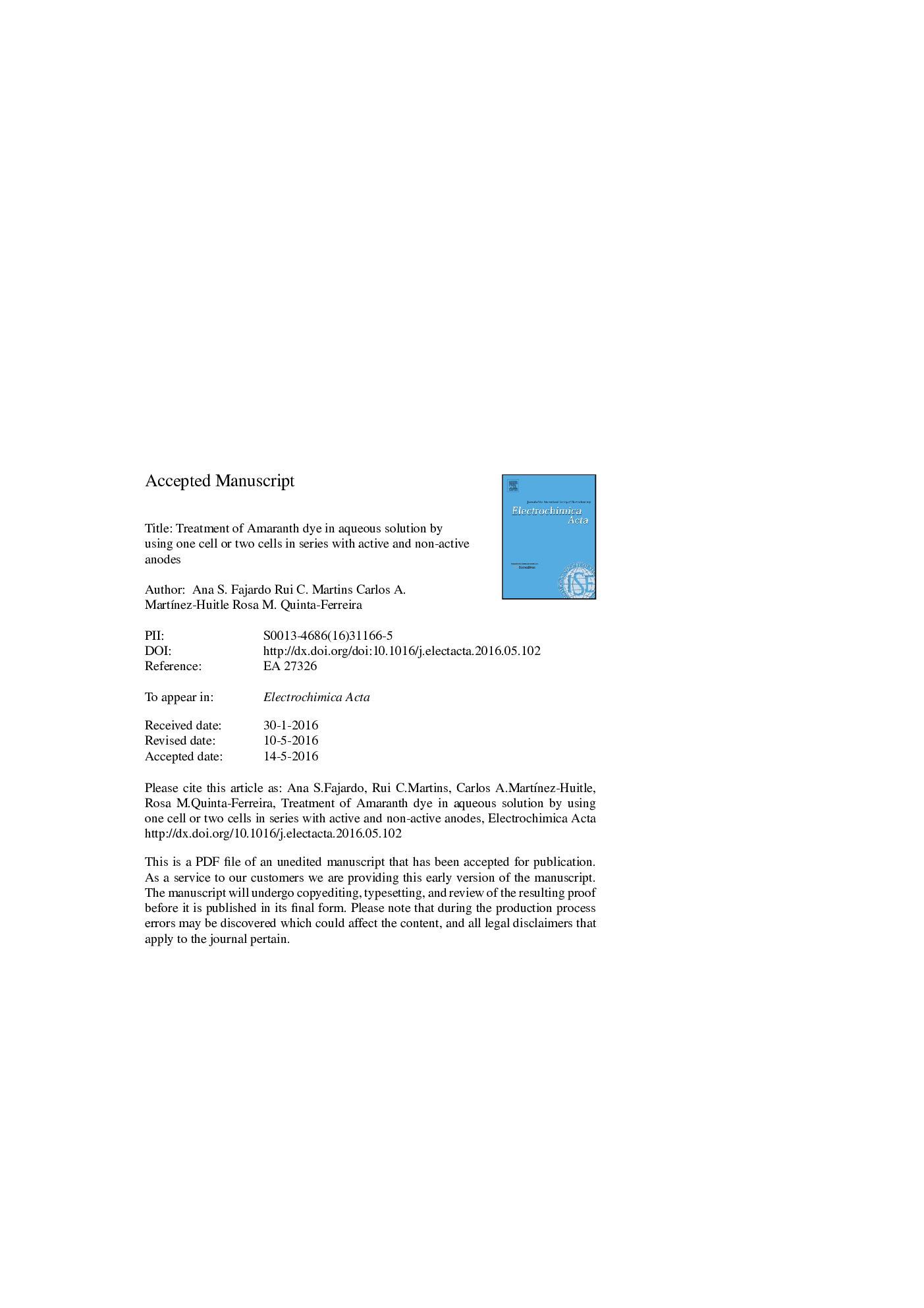| Article ID | Journal | Published Year | Pages | File Type |
|---|---|---|---|---|
| 6606613 | Electrochimica Acta | 2016 | 42 Pages |
Abstract
The anodic oxidation of Amaranth dye has been studied by electrochemical measurements (cyclic voltammetry and polarisation curves) and bulk electrolysis employing a single or two cells in a serial mode system using active and non-active anodes (Ti/IrO2-Ta2O5 and Nb/BDD) as electrode materials. The results of electrochemical measurements showed that, Nb/BDD had a significant oxidation power to mineralise Amaranth dye than Ti/IrO2-Ta2O5 anode. Single cells were tested at different current densities (30, 60 and 80 mA cmâ2). At Nb/BDD anode, total colour elimination and 49.1% of COD removal were achieved by applying 30 mA cmâ2 after 60 min of treatment. Conversely, 98.5% of colour removal and 43.2% of COD decay were accomplished at 60 mA cmâ2 with Ti/IrO2-Ta2O5 electrode, after 360 min of electrolysis time. Supported on the obtained results with single cells, a system in a serial mode was further evaluated for the first time. The arrangement with Ti/IrO2-Ta2O5 electrode at 30 mA cmâ2 in the first cell followed by Nb/BDD anode at 30 mA cmâ2 revealed the most interesting results. Complete decolourisation and 75.1% of COD abatement were achieved after 60 min with lower energy requirements of about 25.4 kWh mâ3 (0.2 kWh gCODâ1). This study demonstrates the potential of a serial system to be applied as a wastewater pre-treatment approach.
Related Topics
Physical Sciences and Engineering
Chemical Engineering
Chemical Engineering (General)
Authors
Ana S. Fajardo, Rui C. Martins, Carlos A. MartÃnez-Huitle, Rosa M. Quinta-Ferreira,
